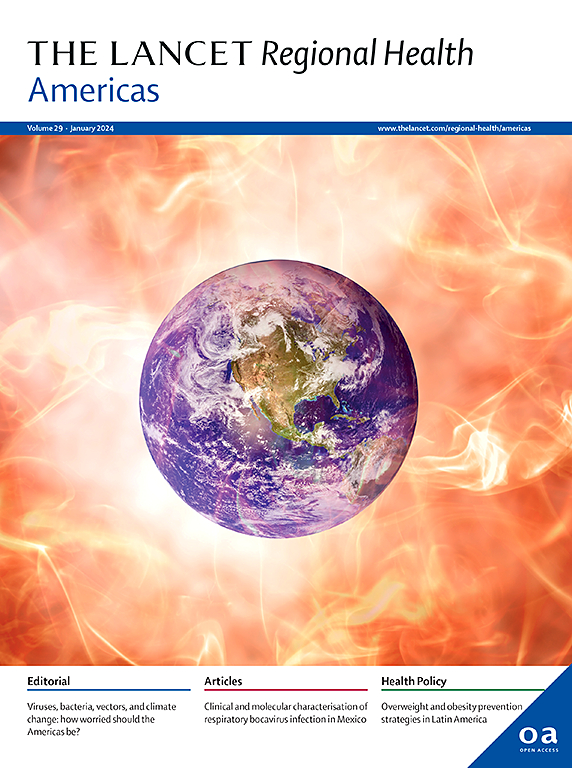Actions against the double burden of malnutrition in Peru: a community-informed system dynamics model
IF 7
Q1 HEALTH CARE SCIENCES & SERVICES
引用次数: 0
Abstract
Background
Peru's progress in reducing stunting has stagnated since 2018, while the country is facing increasing levels of overnutrition, leading to a double burden of malnutrition. However, this shift in nutrition burden is not reflected in Peru's nutrition policy agenda. This study aims to identify leverage points for actions against population-level double burden of malnutrition in Peru.
Methods
We developed a system dynamics model that simulates changes in overweight and stunting over time in Peru through changes in food system drivers. The model was conceptually informed by policymakers, practitioners and community members in Peru and used quantitative and qualitative data from secondary sources and published literature.
Findings
The model indicated that several overnutrition policies, including policies targeting food availability and affordability, may decelerate but not halt the increase of overweight in the country, mainly due to industry resistance. However, in the long term, the reallocation of resources towards overnutrition policies may inadvertently hinder progress towards stunting targets. Transforming nutrition policy governance, from siloed overnutrition and undernutrition policies towards a common policy framework against the double burden of malnutrition was the only modelled scenario that halted the rise in overnutrition, while keeping Peru on course to reach its stunting goals.
Interpretation
Transition away from policy landscapes that focus on single nutrition outcomes towards synergistic actions that target malnutrition in all forms is a long-term solution towards achieving global nutrition goals. Such policy transitions are especially important in low and middle-income countries like Peru, which are affected by the double burden of malnutrition.
Funding
This study was supported by a research grant from the Biotechnology and Biological Sciences Research Council (BBSRC) (grant reference: BB/T009004/1).
应对秘鲁营养不良双重负担的行动:社区知情的系统动力学模型
自2018年以来,秘鲁在减少发育迟缓方面的进展停滞不前,而该国正面临着日益严重的营养过剩问题,导致营养不良的双重负担。然而,这种营养负担的转变并未反映在秘鲁的营养政策议程中。本研究旨在确定针对秘鲁人口层面营养不良双重负担采取行动的杠杆点。方法我们开发了一个系统动力学模型,通过食物系统驱动因素的变化来模拟秘鲁随着时间的推移超重和发育迟缓的变化。秘鲁的政策制定者、从业人员和社区成员向该模型提供了概念信息,并使用了二手来源和已发表文献的定量和定性数据。该模型表明,一些营养过剩政策,包括针对食物供应和负担能力的政策,可能会减缓但不能停止该国超重的增长,这主要是由于行业的抵制。然而,从长期来看,将资源重新分配给营养过剩政策可能会无意中阻碍实现发育迟缓目标的进展。将营养政策治理从孤立的营养过剩和营养不足政策转变为针对营养不良双重负担的共同政策框架,是阻止营养过剩上升的唯一模拟情景,同时使秘鲁继续朝着实现其发育迟缓目标的方向前进。从侧重于单一营养结果的政策格局转向针对各种形式营养不良的协同行动,是实现全球营养目标的长期解决方案。这种政策转变在秘鲁等低收入和中等收入国家尤为重要,因为这些国家受到营养不良双重负担的影响。本研究由生物技术和生物科学研究委员会(BBSRC)的研究基金支持(资助号:BB/T009004/1)。
本文章由计算机程序翻译,如有差异,请以英文原文为准。
求助全文
约1分钟内获得全文
求助全文
来源期刊

Lancet Regional Health-Americas
Multiple-
CiteScore
8.00
自引率
0.00%
发文量
0
期刊介绍:
The Lancet Regional Health – Americas, an open-access journal, contributes to The Lancet's global initiative by focusing on health-care quality and access in the Americas. It aims to advance clinical practice and health policy in the region, promoting better health outcomes. The journal publishes high-quality original research advocating change or shedding light on clinical practice and health policy. It welcomes submissions on various regional health topics, including infectious diseases, non-communicable diseases, child and adolescent health, maternal and reproductive health, emergency care, health policy, and health equity.
 求助内容:
求助内容: 应助结果提醒方式:
应助结果提醒方式:


